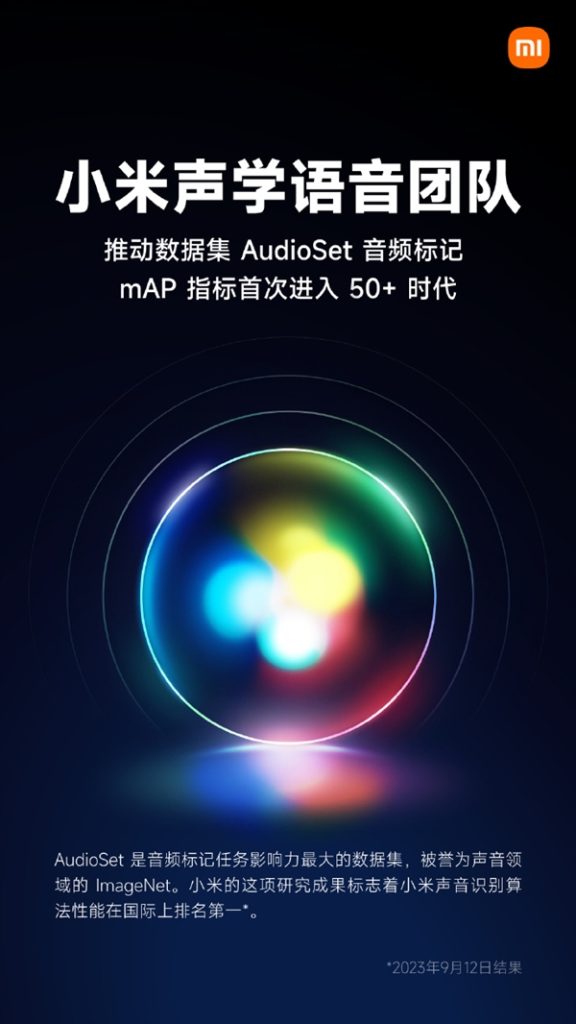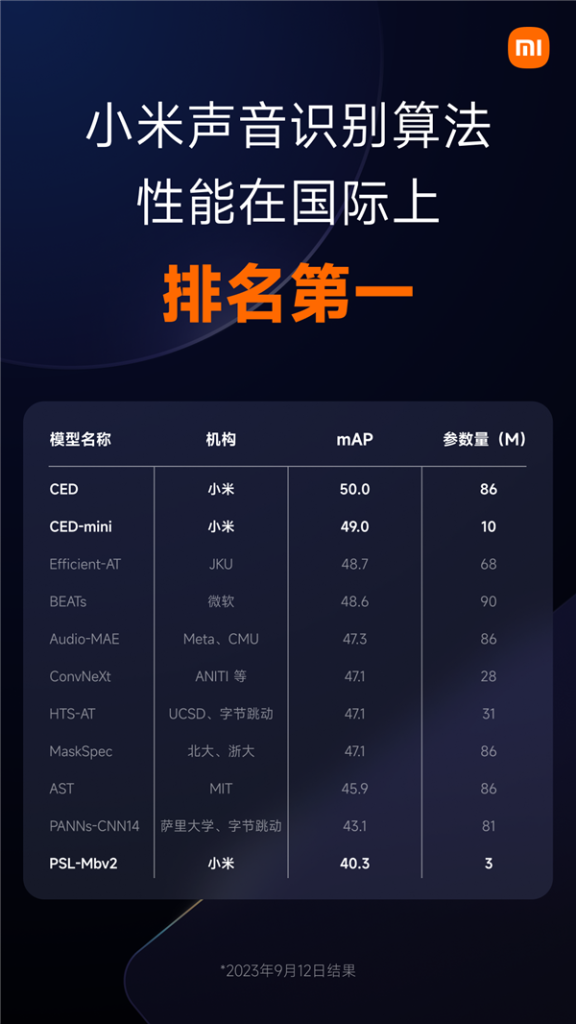Xiaomi has achieved a notable milestone with its self-developed sound recognition algorithm, making significant progress in the realm of Audio Tagging tasks. By utilizing audio data from the publicly available dataset AudioSet-2M for training, Xiaomi’s audio tagging model has achieved a score exceeding 50 mAP for the first time. This achievement has positioned Xiaomi’s sound recognition algorithm as a leader on the global stage.

Xiaomi’s Breakthrough in Sound Recognition Technology
To provide context, Google divided the AudioSet dataset into three parts, with the first two subsets collectively known as “AudioSet-2M” used for training purposes. It was within this training dataset that Xiaomi’s sound recognition algorithm model surpassed the 50 mAP threshold, setting a new standard in audio tagging technology.
Furthermore, Xiaomi has introduced a Mini version of this model, tailored for resource-constrained scenarios. Despite its reduced size, this Mini model outperforms similar models from other organizations.

This technological advancement holds practical value as it can be broadly applied to Xiaomi’s smart devices, enhancing the overall user experience. The algorithm excels at recognizing various environmental sounds, such as baby cries, animal noises, car engines, and more, and can represent these sounds in different forms, like text.
Furthermore, Xiaomi’s robots benefit greatly from this algorithm technology. The humanoid robot, CyberOne, can recognize 85 types of environmental sounds and perceive a wide range of human emotions through auditory sensing. The second-generation biomimetic quadruped robot, CyberDog 2, can identify 38 types of environmental sounds, further enhancing its dynamic response capabilities.
RELATED:
- Europe may get special Xiaomi 13T with Leica camera
- MIUI 15 Codebase reportedly confirms Xiaomi 14 Series launch in November
- Xiaomi 13T and 13T Pro Pricing and Color Options Leaked
- Vivo X Flip vs OPPO Find N3 Flip: Specs Comparison
- Huawei Mate 60 Pro Plus vs Pixel 7 Pro: Specs Comparison
- Samsung Galaxy Z Fold5 vs Huawei Mate X5: Specs Comparison
(Via)







